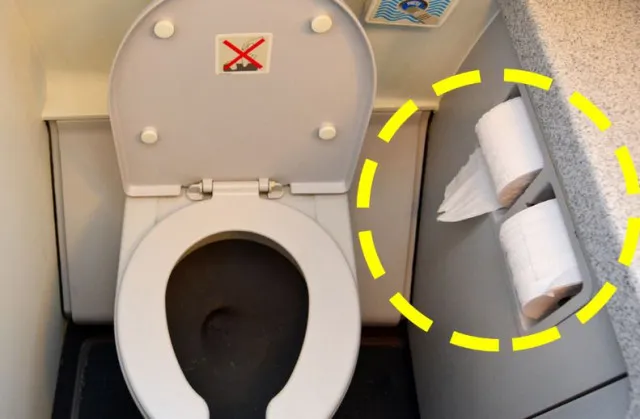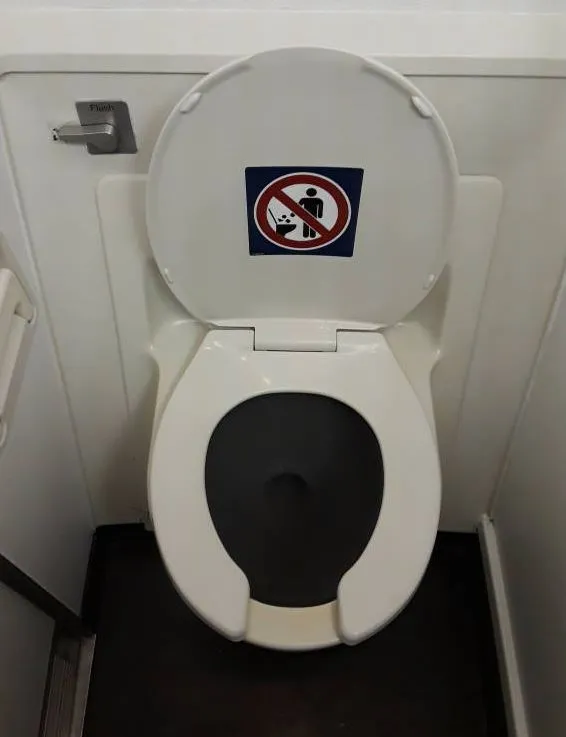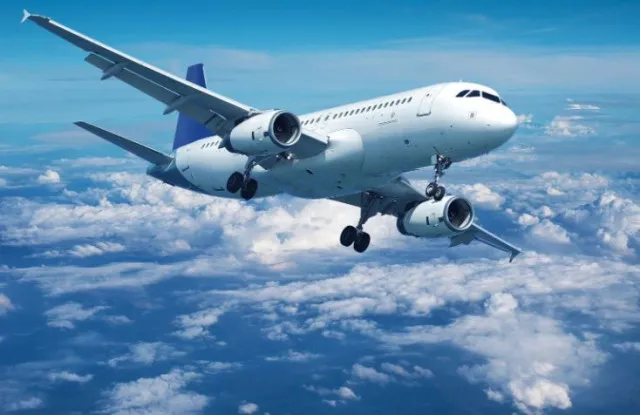Ever wonder about the cleanliness of airplane bathrooms? A flight attendant recently shocked the internet with advice you won’t forget: avoid the toilet paper on airplanes. This viral video has highlighted hygiene issues that frequent flyers may never have considered. Here’s why you should think twice about using airplane toilet paper and how to stay sanitary while flying.

Image Credits: Getty
The Startling Truth Behind Airplane Toilet Paper
In a TikTok video that quickly went viral, a flight attendant named Kate warned passengers to steer clear of the toilet paper in airplane bathrooms. Her reasoning? Airplane restrooms are often not cleaned as thoroughly as one might hope, and toilet paper can easily become contaminated. “Don’t use the toilet paper on the plane,” Kate urged. “It’s got men’s pee on it because they don’t know how to control that thing.” Her blunt comment underscores a major hygiene issue: toilet paper on airplanes can be contaminated due to confined spaces, frequent use, and less-than-ideal cleaning practices.
Why Airplane Restrooms Are Germ Havens
Airplane restrooms are notoriously small, and the frequent use by hundreds of passengers in a short period only compounds the problem. Limited space makes it easy for surfaces to become contaminated. According to flight attendants, the restroom’s compact design, high traffic, and limited cleaning during flights create the perfect conditions for germs to thrive. Kate’s video reminded viewers that even the toilet paper in airplane bathrooms might not be as clean as you’d expect, and the same goes for other surfaces in the restroom.
@blessedbybruski Flushing toilet paper💀#airplane #toiletpaper #fyp ♬ original sound – *
Other “Filthy” Surfaces on Planes You Should Avoid
Another flight attendant, Cher, shared additional insights on airplane cleanliness, pointing out other unexpectedly dirty surfaces. According to her, passengers should be mindful of window shades, seat belt straps, and overhead bins. “I’ve only seen toilet seats cleaned once in my career,” she said, adding that surfaces we often touch without a second thought are actually crawling with germs.
Window shades, for instance, are touched frequently but cleaned infrequently. Seat belts and armrests experience similar neglect, leaving bacteria to accumulate over time. The information from these flight attendants has made one thing clear: airplane surfaces, particularly in bathrooms, are best avoided whenever possible.
The Problem with Using Airplane Toilet Paper
Toilet paper in airplane restrooms often gets contaminated by urine due to the cramped environment and turbulence. As a result, what should be a hygienic product can become a carrier of germs. Passengers may use toilet paper without realizing it’s been exposed to contaminants, as it can be hard to detect any residue or odor. Kate’s advice to skip the toilet paper isn’t just a personal preference—it’s a practical tip for minimizing exposure to germs.
Instead of using the toilet paper, passengers can opt for other options, such as bringing their own tissue packets or sanitizing wipes. These small items can go a long way toward protecting yourself from the less-than-pristine conditions in airplane bathrooms.

Other unhygienic surfaces on airplanes include window shades, seatbelt straps, and toilet seats, which are rarely cleaned. Image Credits: Getty
Alternative Tips for Staying Clean on a Flight
To avoid the risks of airplane bathrooms, here are some practical hygiene tips that can keep you protected:
- Carry Personal Tissues or Wipes: Bringing a small pack of tissues or antibacterial wipes can be a lifesaver, offering a cleaner alternative to the toilet paper provided.
- Use Hand Sanitizer Generously: While handwashing is essential, following up with hand sanitizer can add an extra layer of germ protection, especially on high-touch surfaces.
- Avoid Direct Contact with Bathroom Surfaces: Use a tissue to handle door handles, and try not to lean on the bathroom walls or other surfaces. Minimizing direct contact can help reduce your exposure to germs.
These tips can make your experience more sanitary, even in a confined space.
Why You Should Keep Your Shoes On While Flying
Kate didn’t stop at toilet paper in her hygiene warning. She also advised passengers to keep their shoes on for the entire flight. Many people feel tempted to slip off their shoes for comfort, but she warned against going barefoot or even in socks. “There’s pee on the ground everywhere,” Kate explained, specifically cautioning against barefoot bathroom visits. Floors in airplane restrooms can easily become contaminated with spilled liquids, especially given the close quarters and frequent use.
For your safety, keep your shoes on when walking around the cabin and especially when visiting the restroom. Airplane floors don’t receive the same level of cleaning as a home or office, so sticking to shoes can prevent unpleasant encounters with germs.
Mind Your In-Flight Etiquette for a Smoother Journey
Beyond hygiene, Kate also touched on in-flight etiquette, offering practical advice for a pleasant flying experience. She reminded passengers to respect the limited space, especially in the galley where flight attendants work. Using the galley as a personal space for stretching or leaning can interrupt flight attendants and disrupt their duties.

Image Credits: Getty
Kate also asked for patience and kindness toward families with children. Air travel can be challenging for parents managing young ones, so maintaining a friendly, understanding attitude benefits everyone onboard. Lastly, she added a reminder to avoid any physical altercations with fellow passengers, humorously stating, “That’s assault, and physical violence means cops, okay? Be kind.” Her tips emphasize that kindness and patience are as essential as good hygiene for a comfortable flight.
Keeping Yourself Safe in Shared Spaces on a Plane
While flying, you’re sharing space with hundreds of people, making hygiene a top priority. Bringing your own personal items like disinfectant wipes, tissues, and hand sanitizer can help reduce your risk of exposure to germs. Wipe down the armrests and tray tables before use, and avoid placing personal items directly on shared surfaces. These small actions can go a long way in helping you arrive at your destination healthy and comfortable.
Conclusion
The revelation about airplane toilet paper from flight attendants like Kate and Cher has offered travelers a new perspective on in-flight hygiene. From skipping the toilet paper in airplane restrooms to keeping your shoes on throughout the flight, these tips can help you avoid unwanted exposure to germs in the confined space of an aircraft. Staying prepared with your own hygiene essentials, practicing in-flight etiquette, and staying mindful of shared spaces all contribute to a healthier, more pleasant flying experience. Safe travels!


